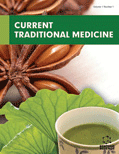
Abstract
Background: Homeopathy is an alternative therapy that uses substance dilution. The homeopathic preparation of Syzygium jambolanum (SJ) has a potential use in the treatment of glycemic disorders.
Objective: In this context, the aim of the present study was to evaluate the use of the SJ homeopathic preparation on treating obesity and glycemic/metabolic disorders compared with metformin treatment (diabetes gold-treatment) in a mice model fed a high-fat diet.
Methods: A total of 48 Swiss male mice were divided into six groups with eight animals each, randomly distributed as follows: obese and non-obese groups, treated and non treated with SJ or metformin. Obesity was induced by high-lard/high-sugar diet, while the control mice (ST) received a standard diet for 12 weeks, after which, for 30 days, the animals received a preparation of 20 μl/100g/body-weight of SJ or a dose of 250 mg/kg metformin (by gavage). The control groups ST and HLHS received water gavage. Body composition and biochemical parameters were evaluated. The adipose genes for lipogenesis and thermogenesis were tested.
Results: The mice treated with Syzygium jambolanum presented reduced weight gain (p< 0.02) and smaller adipose tissue weight, average difference compared to the mice treated with metformin, and both groups showed improved insulin sensitivity (p<0.04). The main results were associated with the modulation of the adipogenesis pathway (C/EPBα and PPARγ) and the thermogenic gene Uncoupling Protein 1 (UCP1).
Conclusion: Syzygium jambolanum homeopathic preparation leads to lower body weight, blood glucose and total cholesterol with higher high-density lipoprotein (HDL), pointing to its efficiency in treating diabetes and obesity.
Keywords: Diabetes mellitus, homeopathy, adipokine, cytokine, Syzygium jambolanum, glycemic disorders.
[http://dx.doi.org/10.1016/S0140-6736(14)60460-8] [PMID: 24880830]
[http://dx.doi.org/10.1186/1478-7954-10-22] [PMID: 23167948]
[http://dx.doi.org/10.1038/ijo.2008.102] [PMID: 18607383]
[http://dx.doi.org/10.1016/S0140-6736(05)66378-7] [PMID: 15836891]
[http://dx.doi.org/10.1016/B978-0-12-822467-0.00003-6]
[http://dx.doi.org/10.1053/j.gastro.2007.03.052] [PMID: 17498505]
[http://dx.doi.org/10.1001/archinte.163.4.427] [PMID: 12588201]
[http://dx.doi.org/10.1074/jbc.274.12.7946] [PMID: 10075691]
[http://dx.doi.org/10.1016/j.cmet.2006.07.001] [PMID: 17011499]
[http://dx.doi.org/10.1074/jbc.R100034200] [PMID: 11459852]
[http://dx.doi.org/10.2337/diacare.27.7.1660] [PMID: 15220243]
[http://dx.doi.org/10.1126/science.7652557] [PMID: 7652557]
[http://dx.doi.org/10.1074/jbc.271.40.24753] [PMID: 8798745]
[http://dx.doi.org/10.1016/j.homp.2017.02.002] [PMID: 28552177]
[http://dx.doi.org/10.3390/ijms19102863] [PMID: 30241400]
[http://dx.doi.org/10.1517/14740338.2013.752813] [PMID: 23241069]
[http://dx.doi.org/10.1007/s13596-015-0186-6]
[http://dx.doi.org/10.1111/j.1399-5448.2008.00377.x]
[PMID: 15190655]
[http://dx.doi.org/10.1517/17460441.3.8.979] [PMID: 23484971]
[http://dx.doi.org/10.1016/j.homp.2013.05.002] [PMID: 23870375]
[http://dx.doi.org/10.1186/1471-2318-10-10] [PMID: 20175887]
[http://dx.doi.org/10.1016/S0140-6736(97)02293-9] [PMID: 9310601]
[http://dx.doi.org/10.1001/jama.280.18.1569] [PMID: 9820257]
[http://dx.doi.org/10.4103/0976-9668.107263] [PMID: 23633838]
[http://dx.doi.org/10.1016/j.homp.2010.05.006] [PMID: 20970092]
[http://dx.doi.org/10.3390/life11040348] [PMID: 33923529]
[http://dx.doi.org/10.3390/biomedicines8050117] [PMID: 32408532]
[http://dx.doi.org/10.1016/j.jep.2021.113834] [PMID: 33465439]
[http://dx.doi.org/10.1016/j.jep.2020.113664] [PMID: 33278545]
[http://dx.doi.org/10.3389/fphar.2016.00525] [PMID: 28133450]
[http://dx.doi.org/10.3390/molecules25071567] [PMID: 32235333]
[http://dx.doi.org/10.3390/ijms21165622] [PMID: 32781533]
[http://dx.doi.org/10.3390/cancers12071959] [PMID: 32707666]
[http://dx.doi.org/10.3389/fphar.2021.669638] [PMID: 34054540]
[http://dx.doi.org/10.1016/j.jep.2021.114182] [PMID: 33964360]
[http://dx.doi.org/10.3390/biom11040592] [PMID: 33920609]
[http://dx.doi.org/10.3390/biom10050792] [PMID: 32443870]
[http://dx.doi.org/10.3390/molecules25153394] [PMID: 32726999]
[http://dx.doi.org/10.3390/molecules26123696] [PMID: 34204308]
[http://dx.doi.org/10.3390/ph13090232] [PMID: 32899148]
[http://dx.doi.org/10.1016/j.jep.2021.114297] [PMID: 34118341]
[http://dx.doi.org/10.3390/plants10020287] [PMID: 33546288]
[http://dx.doi.org/10.1016/j.phyplu.2021.100130]
[http://dx.doi.org/10.1016/j.phytol.2021.04.014]
[http://dx.doi.org/10.3390/plants10061081] [PMID: 34072236]
[http://dx.doi.org/10.1186/s40816-020-00212-w]
[http://dx.doi.org/10.3390/nu13051550] [PMID: 34064534]
[http://dx.doi.org/10.1016/j.sjbs.2020.09.037] [PMID: 33424295]
[http://dx.doi.org/10.2174/1874609814666210614104904] [PMID: 35139785]
[http://dx.doi.org/10.2174/0929866528999210128205817] [PMID: 33511923]
[http://dx.doi.org/10.1016/j.foodchem.2008.02.068]
[http://dx.doi.org/10.1016/j.jsps.2010.05.009] [PMID: 23964177]
[http://dx.doi.org/10.1080/13813455.2020.1835986] [PMID: 33176505]
[http://dx.doi.org/10.1371/journal.pone.0076786] [PMID: 24204674]
[http://dx.doi.org/10.1007/s10787-018-0443-7] [PMID: 29450671]
[http://dx.doi.org/10.1006/meth.2001.1262] [PMID: 11846609]
[http://dx.doi.org/10.2174/2212798411999210101224626] [PMID: 33397263]
[http://dx.doi.org/10.3390/molecules13102545] [PMID: 18927517]
[http://dx.doi.org/10.1016/j.jnutbio.2018.08.013] [PMID: 30359861]
[http://dx.doi.org/10.1016/j.exger.2020.110881] [PMID: 32084535]
[http://dx.doi.org/10.4314/ajtcam.v4i3.31230] [PMID: 20161901]
[http://dx.doi.org/10.1016/S0378-8741(02)00059-4] [PMID: 12020931]
[http://dx.doi.org/10.29219/fnr.v66.3685] [PMID: 35140559]
[http://dx.doi.org/10.1089/1096620041224067] [PMID: 15298766]
[http://dx.doi.org/10.1016/j.homp.2015.02.009] [PMID: 26143453]
[http://dx.doi.org/10.1016/j.jopr.2013.07.020]
[http://dx.doi.org/10.1016/j.fct.2005.04.004] [PMID: 15964674]
[http://dx.doi.org/10.1007/BF02867368] [PMID: 23105393]
[http://dx.doi.org/10.1590/S0004-27302009000500011] [PMID: 19768249]
[http://dx.doi.org/10.1016/0092-8674(94)90006-X] [PMID: 8001151]
[http://dx.doi.org/10.1590/S0021-75572007000700011] [PMID: 17989837]
[http://dx.doi.org/10.1021/acs.jafc.6b04468] [PMID: 27931098]
[http://dx.doi.org/10.3390/nu11030577] [PMID: 30857158]
[http://dx.doi.org/10.1054/homp.1999.0511] [PMID: 11680803]
 16
16 2
2



























